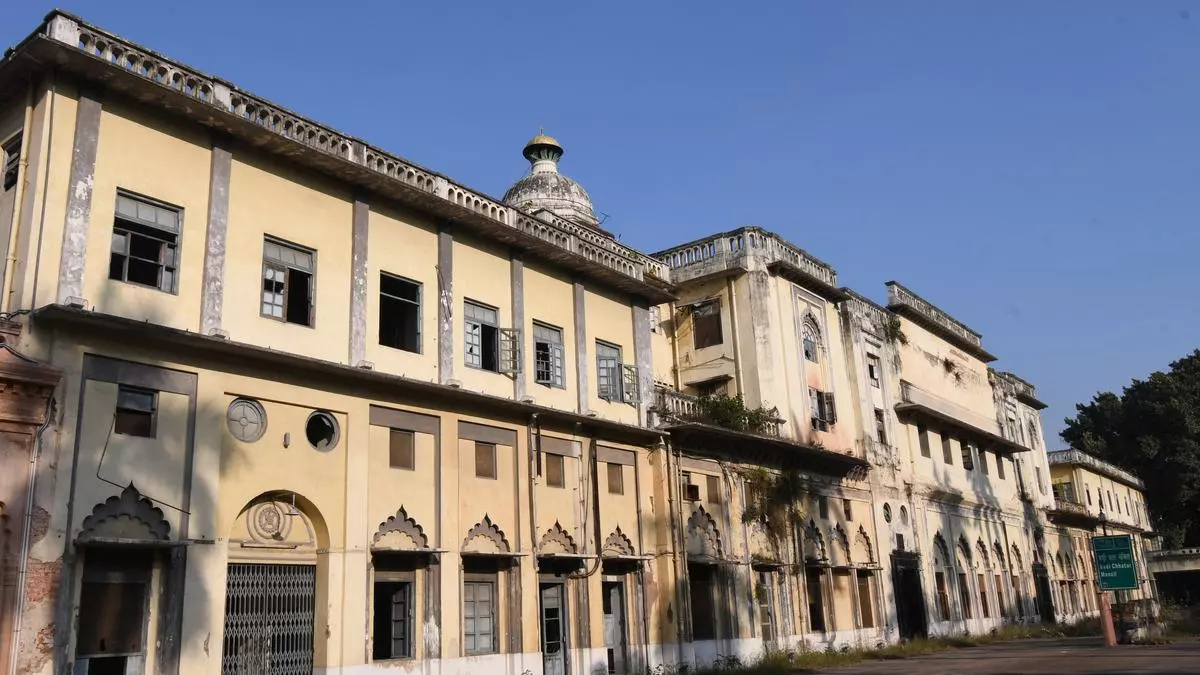The state of Uttar Pradesh, known for its rich history and cultural heritage, is gearing up to transform some of its most iconic properties into hotels. This move, taken under the guidance of the state government, is aimed at promoting tourism and giving visitors a chance to experience the grandeur of these historic structures up close.
In the initial phase, properties such as Chunar Fort in Mirzapur, Barua Sagar Fort in Jhansi, Jal Mahal in Barsana, Lucknow’s Chattar Manzil and Kothi Roshan-ud-Daula, and Shukla Talab Haveli in Kanpur will be transformed into hotels. These properties have stood the test of time and have witnessed the rise and fall of empires, making them an integral part of the state’s heritage.
Chunar Fort, located in the district of Mirzapur, is a magnificent structure that dates back to the 11th century. It has been witness to the rule of many dynasties, including the Mughals and the British. The fort, with its strong and sturdy walls, served as a strategic military outpost and played a significant role in shaping the history of the region. Now, it will be transformed into a hotel, offering visitors a chance to stay in a piece of history and experience the grandeur of the bygone era.
Barua Sagar Fort, situated in Jhansi, is another historic monument that will be converted into a hotel. Built in the 17th century, this fort has stood the test of time and has witnessed the fierce battles of the Marathas and the Bundelas. The fort, with its intricate architecture and breathtaking views, will be a treat for the guests staying at the hotel. It will be a perfect blend of modern amenities and ancient charm.
The Jal Mahal, located in the holy city of Barsana, is a stunning palace built in the 18th century by the Maharaja of Bharatpur. This magnificent structure, surrounded by a lake on all sides, is a fine example of Rajput architecture. The palace, adorned with beautiful frescoes and intricate carvings, will now be open to guests, giving them a chance to experience the royal lifestyle and the rich culture of the region.
The city of Lucknow, often referred to as the ‘City of Nawabs’, is home to some of the most magnificent structures of the Mughal era. Chattar Manzil and Kothi Roshan-ud-Daula are two such historic properties that will be transformed into hotels. Chattar Manzil, also known as the ‘Umbrella Palace’, is a stunning example of Indo-European architecture. The palace, with its unique blend of European and Mughal styles, will offer guests an unforgettable experience. Kothi Roshan-ud-Daula, with its grand façade and lavish interiors, will be a perfect retreat for those seeking a taste of the Nawabi lifestyle.
The state of Uttar Pradesh is also home to many old havelis, which were once the residence of wealthy merchants and aristocrats. Shukla Talab Haveli, located in Kanpur, is one such gem that will be transformed into a hotel. The haveli, with its intricate jali work and beautiful courtyards, reflects the rich cultural heritage of the region. The guests staying at this haveli-turned-hotel will get a chance to soak in the charm and splendor of the bygone era.
This move by the government to convert these historic properties into hotels is a step in the right direction. It not only preserves our heritage but also promotes tourism in the state. Visitors will now have a chance to experience the rich history and culture of Uttar Pradesh first-hand, while also enjoying modern amenities and comforts.
The transformation of these properties into hotels will also create job opportunities for the locals and boost the economy of the state. It will also attract investments in the hospitality sector and help in the overall development of the region.
The state government has also announced plans to develop these properties as eco-friendly and sustainable hotels, ensuring that they do not harm the environment. This move is commendable and shows the government’s commitment towards preserving our heritage for future generations.
In conclusion, the transformation of these historic properties into hotels is a welcome move and will have a positive impact on the state’s tourism industry. It will not only attract tourists from within









